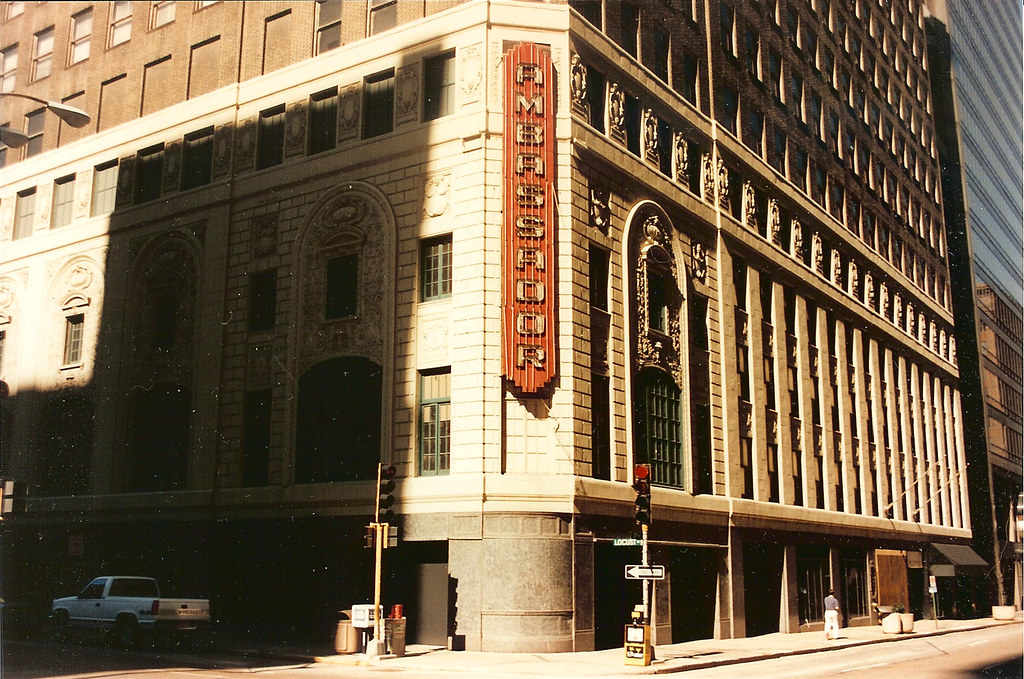 "Today, Mercantile does not have an appropriate entrance to our corporate headquarters". This was the sorry excuse that Ralph Babb, vice-chairman of Mercantile Bank gave at a Heritage and Urban Design Commission hearing in January 1995 to demolish the Ambassador Theater along with a dose of the standard "its too far gone" bullshit. Succumbing to pressure from the "whatever the businesses want" mindset of SLDC director Larry Bushong, the HUDC rolled over and granted the demolition permit.
"Today, Mercantile does not have an appropriate entrance to our corporate headquarters". This was the sorry excuse that Ralph Babb, vice-chairman of Mercantile Bank gave at a Heritage and Urban Design Commission hearing in January 1995 to demolish the Ambassador Theater along with a dose of the standard "its too far gone" bullshit. Succumbing to pressure from the "whatever the businesses want" mindset of SLDC director Larry Bushong, the HUDC rolled over and granted the demolition permit.No "appropriate entrance"!!?? I guess it was not enough that for almost 20 years since its completion in 1976 that the Mercantile Tower had done very well with the landscaped plaza on Washington Avenue complete with its iconic chrome sculpture: Synergism by artists William Severson and Saunders Schultz. Apparently bank officials didn't think this was enough and insisted upon importing a slice of Maryville Office Center into Downtown St. Louis.
 The photo above from PPS shows the tower's entrance plaza on Washington Avenue. Also at right is the columned facade of the Loews State Theater and two other narrow buildings that were demolished in the early 90's to make way the expansion of the convention center (the auditorium of Loews had been demolished almost a decade earlier in 1983).
The photo above from PPS shows the tower's entrance plaza on Washington Avenue. Also at right is the columned facade of the Loews State Theater and two other narrow buildings that were demolished in the early 90's to make way the expansion of the convention center (the auditorium of Loews had been demolished almost a decade earlier in 1983).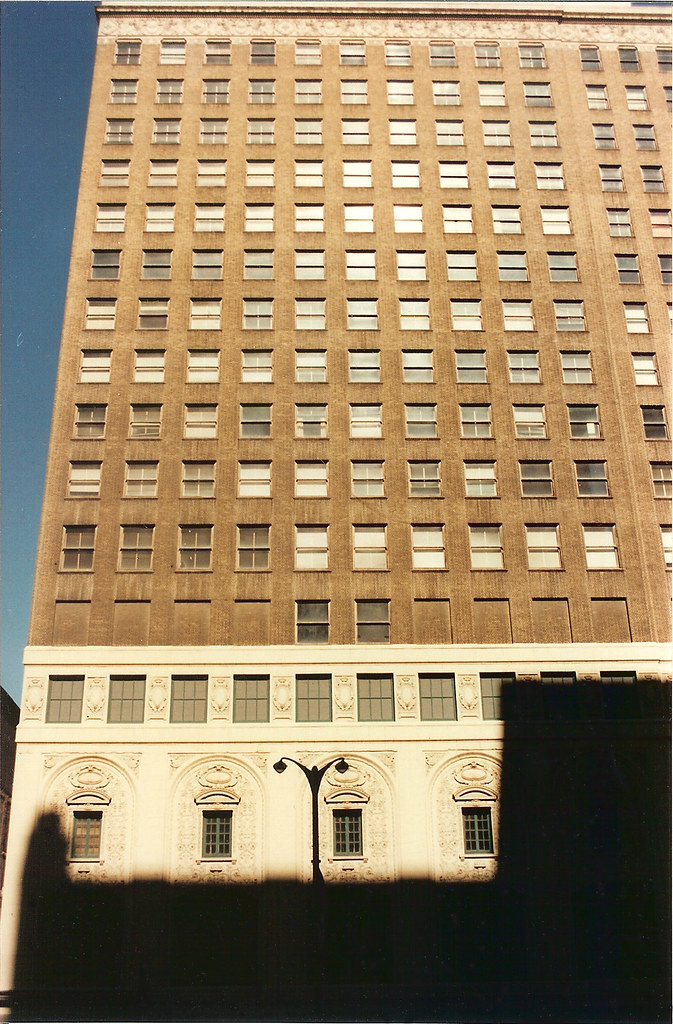 The Ambassador rose 17 stories with eleven office floors above the theater at 7th and Locust Streets. It was completed in 1926 by architects C.W. and George L. Rapp of Chicago. Its opening was promoted as the greatest event in St. Louis since the World's Fair (I wonder how many times that claim was used). In the photo above of the Locust Street facade, above the terra cotta was a row of blank window openings. These concealed the massive trusses that supported the office floors above. More on those below.
The Ambassador rose 17 stories with eleven office floors above the theater at 7th and Locust Streets. It was completed in 1926 by architects C.W. and George L. Rapp of Chicago. Its opening was promoted as the greatest event in St. Louis since the World's Fair (I wonder how many times that claim was used). In the photo above of the Locust Street facade, above the terra cotta was a row of blank window openings. These concealed the massive trusses that supported the office floors above. More on those below.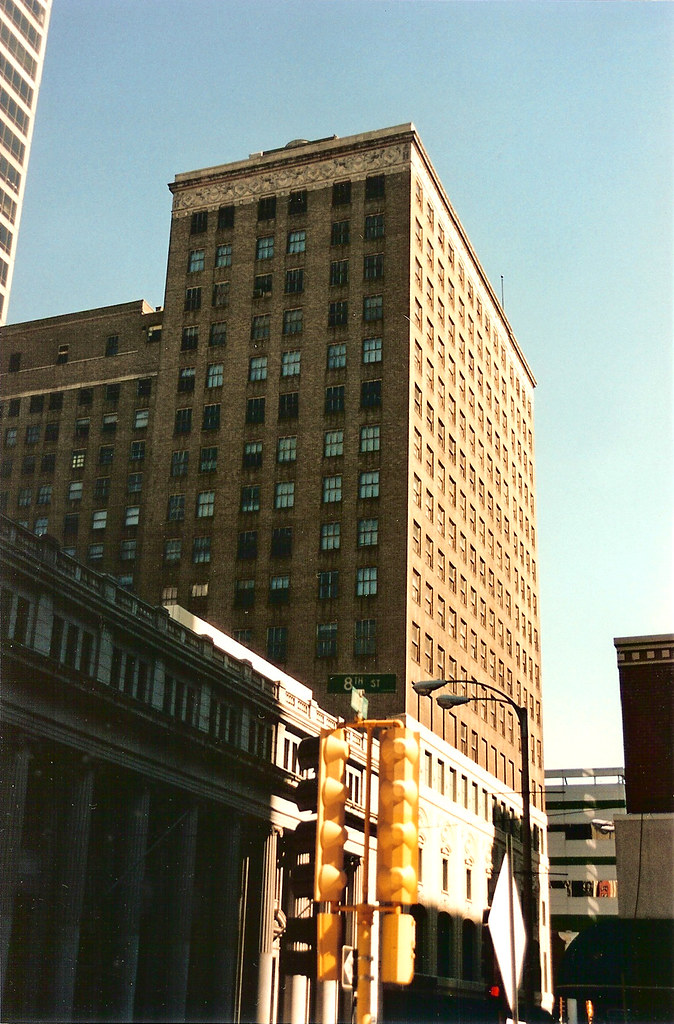 With the context of the three story bank building to the west, the architects chose to wrap the decorative cornice across the entire west elevation of the wing. Typically a cornice would only be wrapped around the corner from the street one bay or less.
With the context of the three story bank building to the west, the architects chose to wrap the decorative cornice across the entire west elevation of the wing. Typically a cornice would only be wrapped around the corner from the street one bay or less.The Theater closed in 1976, but the office building remained open. Prior to Mercantile acquiring the building in 1993, it was owned for 13 years by Barket. Levy and Fine Inc. during their ownership, office occupancy had declined to about 50%. Several redevelopment ideas were floated, but nothing went forward. Of all the ideas proposed to my knowledge there were none for residential conversion office floors, which would seem like a no-brainer today. By March of 1989, the Barket group had apparently given up on any kind of re-use or restoration of the theater itself, and held a public sale, stripping out all decorative features in the lobby and theater including chandeliers, drinking fountains, staircases, and sections of decorative plaster work.
 The beautiful bronze plaque next to the office entrance on 7th street. The Skouras Brothers financed the construction of the building.
The beautiful bronze plaque next to the office entrance on 7th street. The Skouras Brothers financed the construction of the building.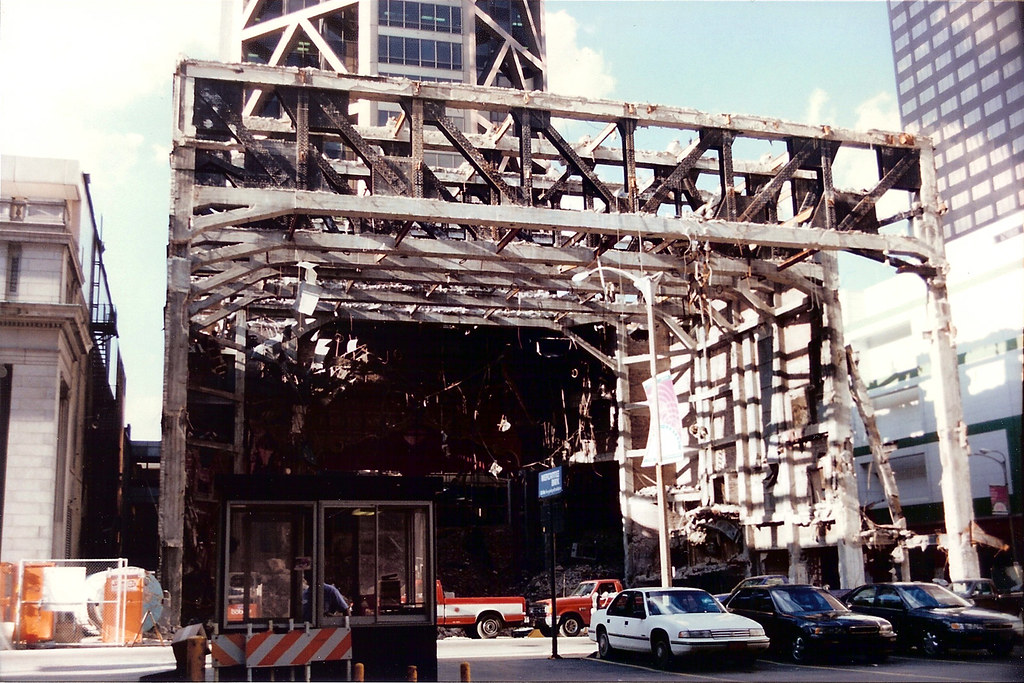 After demolition of the remainder of the building, all that remained was the super-structure including the giant concrete filled trusses, which were apparently a surprise to Spirtas, the demolition contractor.
After demolition of the remainder of the building, all that remained was the super-structure including the giant concrete filled trusses, which were apparently a surprise to Spirtas, the demolition contractor. The headache ball was unable to make the trusses budge. The building had its last revenge, and a large crane and scaffolding had to be brought in to remove the trusses in pieces.
The headache ball was unable to make the trusses budge. The building had its last revenge, and a large crane and scaffolding had to be brought in to remove the trusses in pieces. Seen from the stairwell of the Chemical Building is the glorified driveway that Mercantile installed as their "appropriate entrance".
Seen from the stairwell of the Chemical Building is the glorified driveway that Mercantile installed as their "appropriate entrance".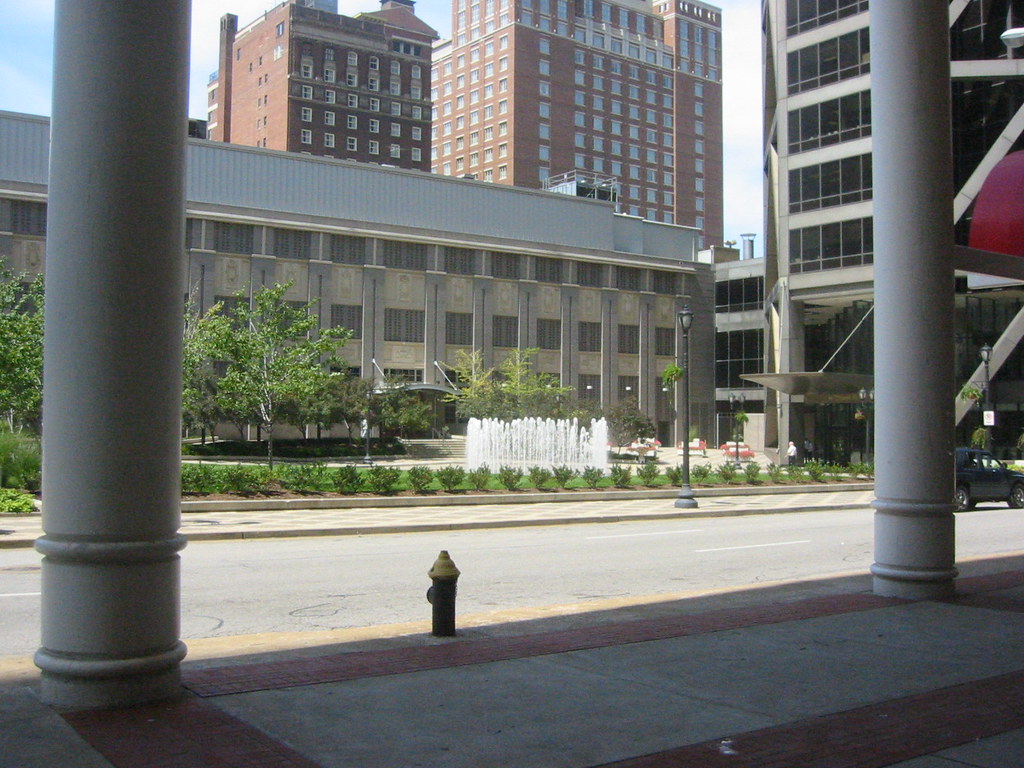 In a token attempt at pleasing anyone with memories of the theater, offices or an appreciation for historic architecture, some terra cotta panels were installed on the back-side of the original bank building. To bad they couldn't even bother to cover up the lovely mechanical shed on the roof.
In a token attempt at pleasing anyone with memories of the theater, offices or an appreciation for historic architecture, some terra cotta panels were installed on the back-side of the original bank building. To bad they couldn't even bother to cover up the lovely mechanical shed on the roof.For more photos of the demolition and several by Toby Weiss of the beautiful interior prior to being stripped, take a look at these pages on Built St. Louis.

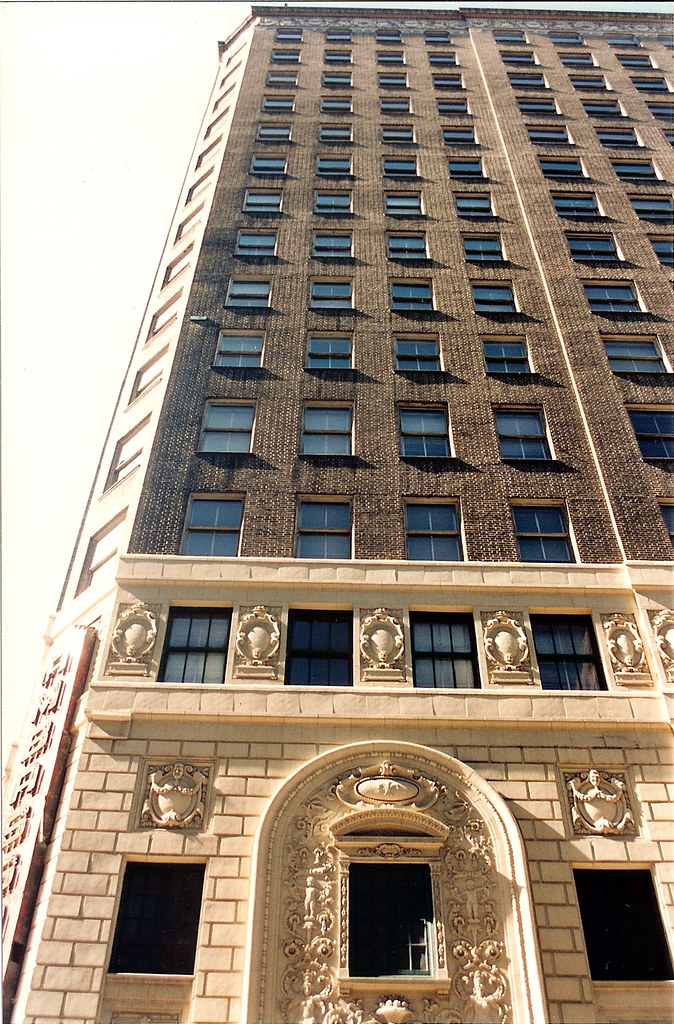
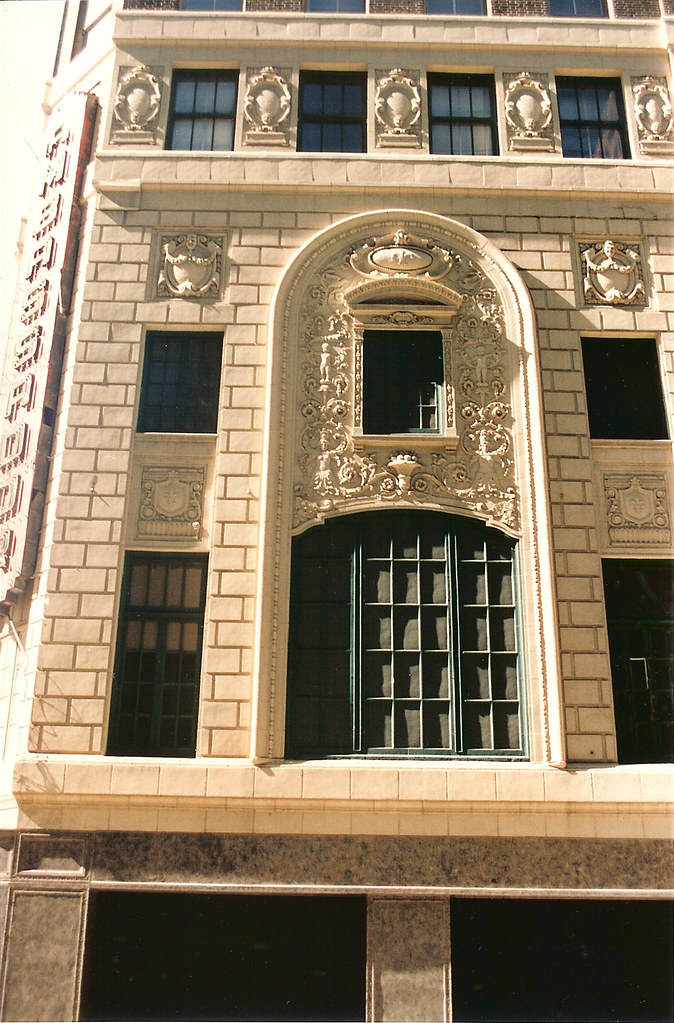
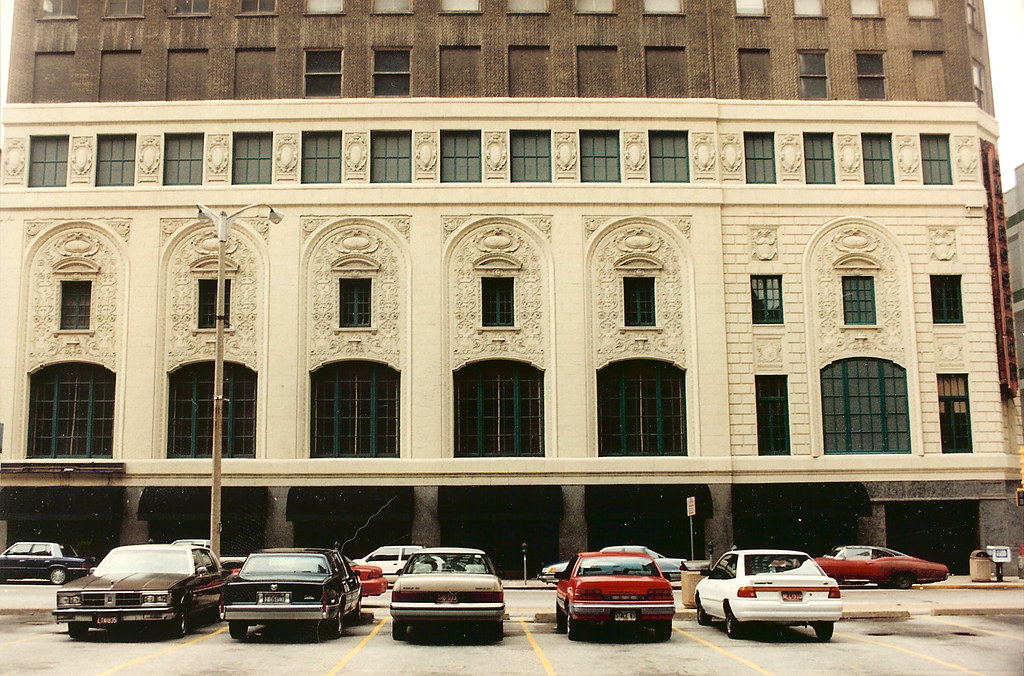
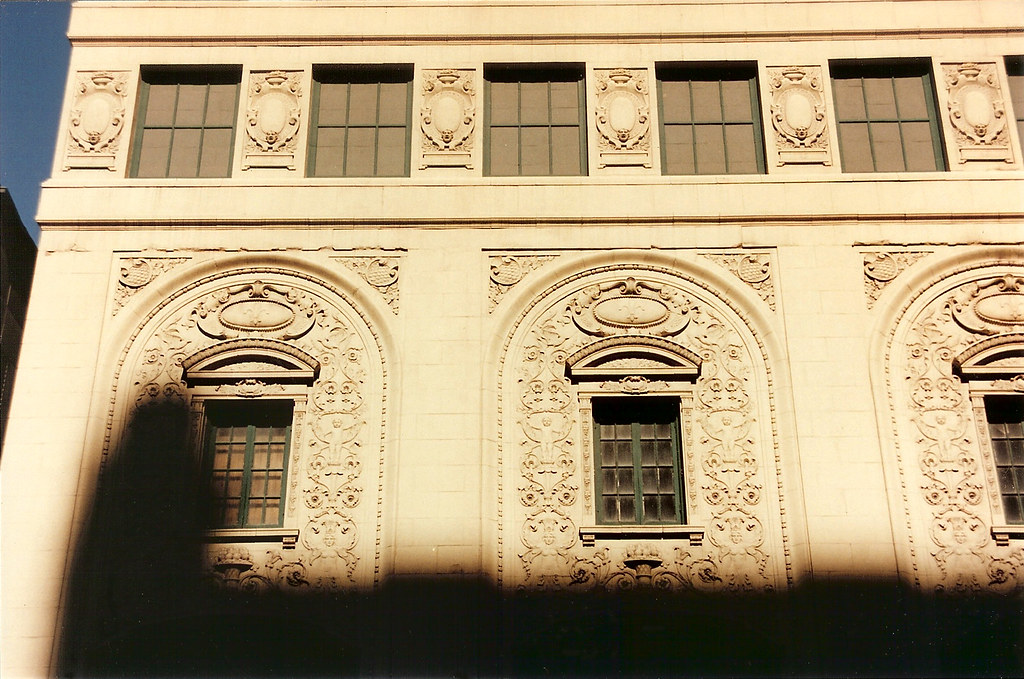

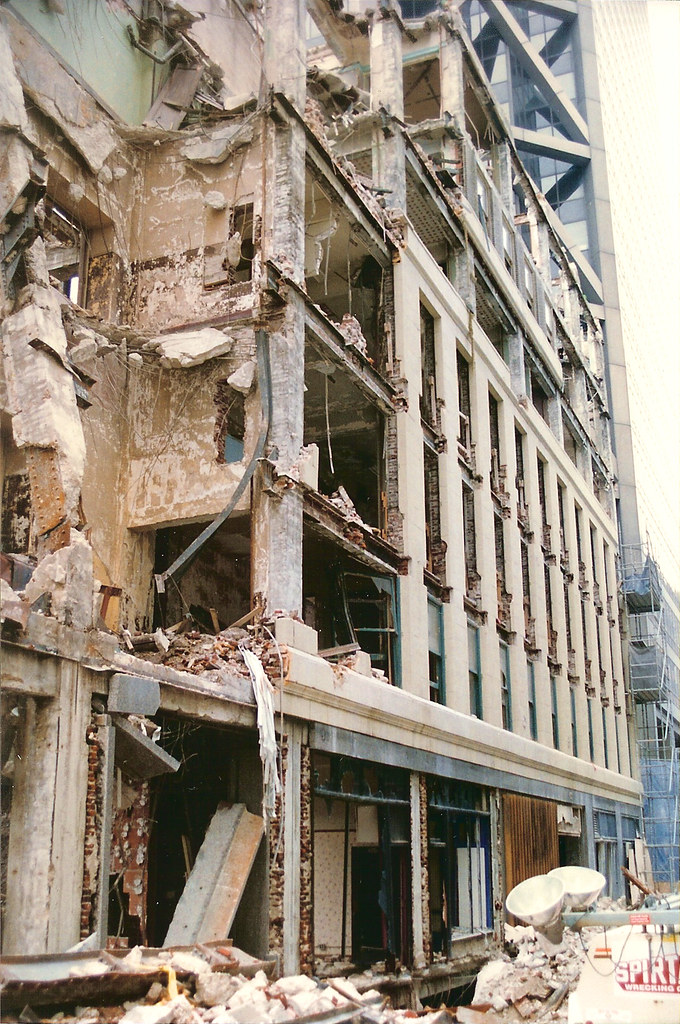

3 comments:
This still makes me angry, all these years later. And now, with the vaunted Mercantile Exhange going up across the street, there will be a gaping hole where an historic building could have beautifully complemented the new construction.
I think the bank wanted the Ambassador gone so the Tower could be better seen from around the city to the south.
In a perfect world, the city would seize the old Ambassador site and sell it for new construction.
I know, I know, that would be government interfering in the "rights" of business and all.
A true shame, like many others in the country ! Hopefully you got some good pictures of this crime.
One of the reasons that I have no respect for the sleazy way that this city is run. None. The Ambassadlr, the The Century, The Holland Building, The International Building, a Terra Cotta Row, The Buder Building, The Title Guaranty Building....
All gone and for what? The beautiful architectural fabric of the city has been destroyed by sleazy development, time and time again.
Post a Comment